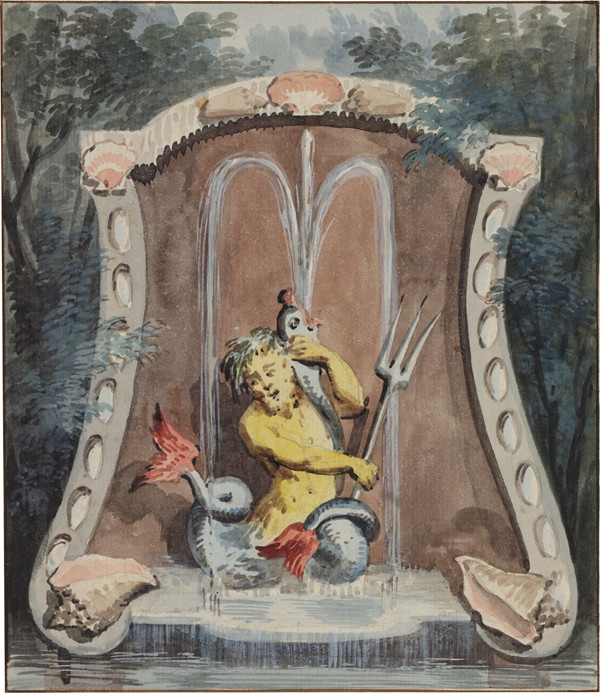
Fontein met triton en schelpen, Aert Schouman
Deze vraag komt via Renske Ek van Onno van Seggelen en heeft betrekking op bovenstaande afbeelding. Een fontein met triton en schelpen van de hand van Aert Schouman ( 1710-1792). Het zou kunnen hebben gestaan op een van de buitenplaatsen die Schouman afbeeldde. Op Zuydwind bijvoorbeeld, voor afbeeldingen zie hier. Maar wie weet wat de locatie kan zijn geweest?
(OVERGENOMEN van www.onnovanseggelen.com)
Shells became a popular field of interest during the seventeenth century with collectors embossing their cabinets with the most splendid choices of specimens, symbolizing Gods creation, allegories of Water, Wind and the Sea as well as the transiency of life which made them figurate perfectly in Vanitas paintings. Just like tulips, shells (brought by VOC- and WIC-tradesmen) represented valuable objects for speculation and fetched high prices before they could be put on display in collectors’ cabinets. Some collectors also had their collections painted, like the painting by Abraham Susenier, dated 1659 and probably commissioned by Willem van Beverwijck (1632-1665), son of the famous Doctor Johan van Beverwijck (1594-1647).
With Andries Colvius’ (1594-1671) cabinet of shells as one of the earliest, the city of Dordrecht counts a rich tradition of collecting shells and after returning from Ambon and the Banda-Islands, François Valentijn’s (1656-1727) Oud en Nieuw Oost-Indien became a rich source of documentation of these cabinets and their contents.
With this abundant history of collecting shells it doesn’t come as a surprise the very first Conchological Society (de liefhebbers van Neptunus-cabinet) was founded in Dordrecht with it’s members gathering every first Wednesday of the month to share their passion for shells and show recent acquisitions.
